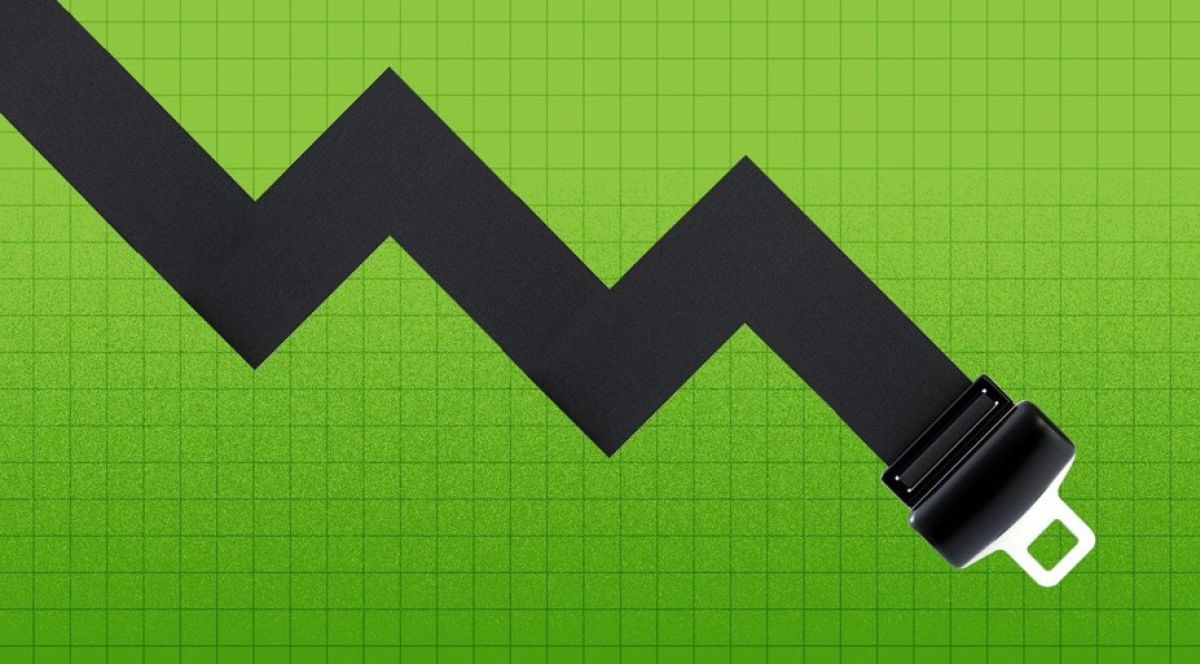Economy, eNews
Recession or not, be ready: Tips for credit managers in an uncertain economy

A recent contraction in the United States’ gross domestic product (GDP) is raising concerns for economists and credit managers as an early sign of recession. Meanwhile, inflationary pressures continue to weaken consumer sentiment, further contributing to a decline in market wealth.
Why it matters: Whether or not a recession is on the horizon, credit managers need to be prepared. These practical tips can help you navigate uncertainty and stay ahead—no matter which way the economy turns.
What is a recession?
A recession is defined as a temporary period of economic decline, typically marked by a drop in GDP over two consecutive quarters. However, an official recession is not declared based solely on GDP performance. The Business Cycle Dating Committee of the National Bureau of Economic Research (NBER), the official body responsible for declaring recessions, considers a broader set of indicators—including job losses, rising unemployment and declines in income, retail sales and industrial production—before making such a determination.
In the first quarter of 2025, U.S. real GDP contracted at an annualized rate of 0.3%, which some economists view as a potential warning sign. Although this alone does not confirm a recession, staying alert to certain indicators is vital to safeguard against potential risks.
Tips to navigate a recession
#1 Review your credit policy
In uncertain economic times, reviewing your credit policy will help you mitigate risk. Ask yourself whether your policy is too lenient or too restrictive and adjust it accordingly. Even the smallest change, like increasing customer reviews, can make a world of difference in your risk management strategy.
“Since COVID, we’ve been operating with a relatively lenient approach, but in a recession, we’d need to reduce credit approvals and possibly raise the criteria for getting approved,” said Adam Aune, credit manager at Butler Machinery (Fargo, ND). “On the back end, we’d also need to take a more proactive approach to collections—starting earlier and making more attempts to recover payments. Right now, we’re fairly light in that area because it hasn’t been necessary. But in a downturn, we’d need to ramp up those efforts to ensure we’re protecting our cash flow.”
#2 Tighten collection efforts
During financial hardship, even reliable customers may delay payments or go past due, requiring credit professionals to apply more pressure while preserving relationships. This may mean sending demand letters, making more calls or visiting the customer in person.
At times, using a less aggressive approach makes collecting payments easier. “We often make a collection call before the due date, framed more like a customer service check-in,” said Martine Dyer, CCE, CCRA, credit and collections manager at RES-Restaurant Equipment Service Group, LLC (Addison, IL). “It helps maintain the relationship while subtly reinforcing that payment is expected.”
#3 Refer to the CMI Survey
Credit professionals are typically the first people to detect solvency risk in their customers. By referencing and participating in NACM’s Credit Managers’ Index (CMI), they can find early indicators of economic shifts—including recessions—helping credit professionals anticipate risks and align their strategies.
The CMI survey comprises ten core metrics—four are considered “favorable” factors, where increases reflect improving conditions. These include sales, new credit applications, dollar collections and the amount of credit extended. The remaining six are classified as “unfavorable” factors, meaning that rising values signal growing financial stress. These include rejections of credit applications, accounts placed for collections, disputes, dollar amount of receivables beyond terms, dollar amount of customer deductions and number of bankruptcy filings.
When reading the CMI for recession indicators, credit professionals must look closely at the unfavorable factors. For example, any increases in the dollar amount of receivables beyond terms or accounts placed for collections signal economic strain. “A rise in customer deductions, such as companies asking for discounts or trying to shave off costs, indicates high level of financial distress,” said NACM Economist Amy Crews Cutts, Ph.D., CBE. “An increase in customer disputes is often a tactic to delay payment. If one of the favorable factors such as the number of dollar collections falls, it is another bad sign.”
CMI respondents can provide insight into macroeconomic issues affecting customers in various industries. One respondent noted rising requests for extended terms and slower payments, while another observed sales and credit figures skewed by tariff-driven cost increases and panic buying. Economic uncertainty is prompting unusual customer behavior, including a spike in mechanic’s lien filings—the highest in five years. Meanwhile, tariffs on China are boosting interest in domestic offerings and improving competitiveness.
The bottom line: Every recession is different, so risk evaluation requires interpretation. Credit managers who remain diligent and flexible are best prepared for a possible downturn.Paying attention to what other credit professionals are saying can also help you manage future risk. “Credit managers who participate in the CMI see the cash flow issues before they hit the headlines,” Cutts said. “Their insights—and the data in the CMI—are incredibly valuable leading indicators of what’s really going on in the economy.”
On a coffee break? Share your thoughts on business credit in our quick CMI survey before it closes on Thursday, May 22. To view the full April CMI report, click here.





